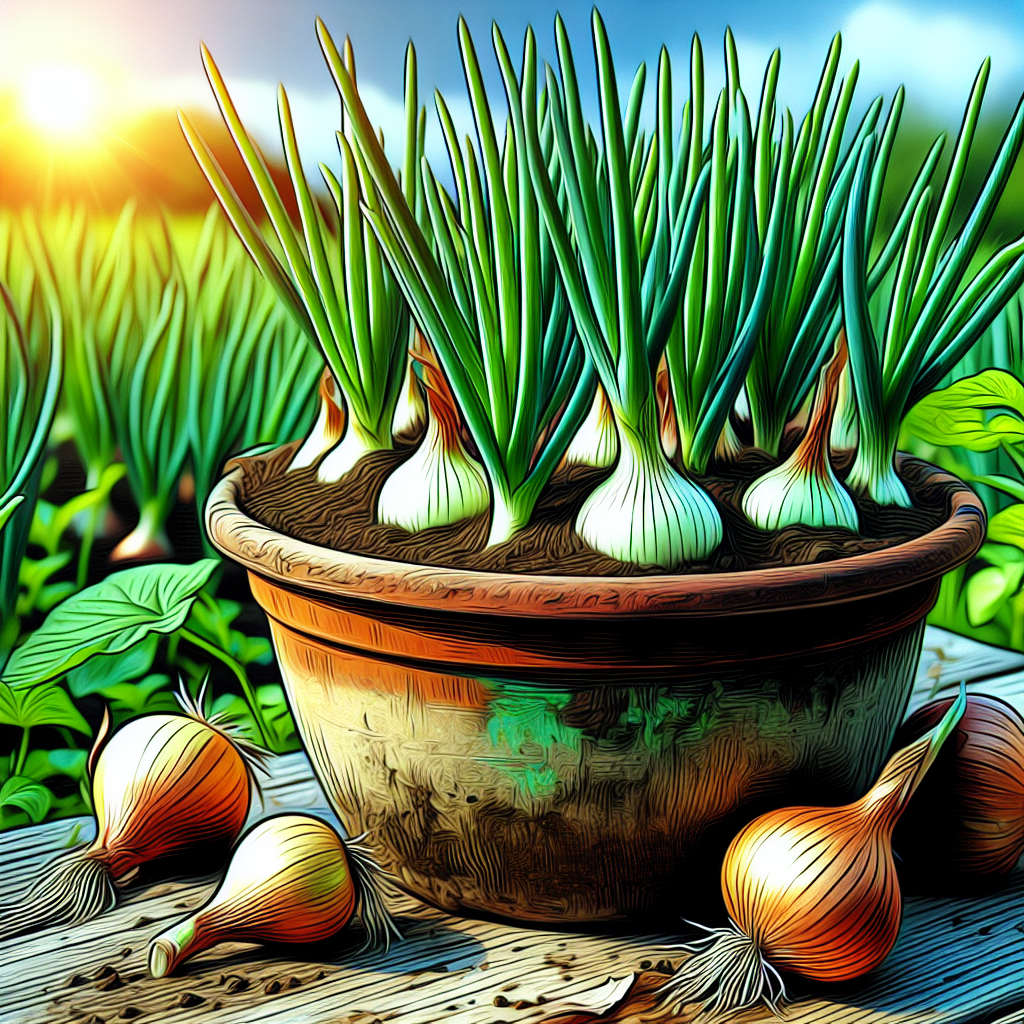Onions are a versatile and popular vegetable that can be grown in containers with the right care and attention. Growing onions in containers is a great option for those who have limited space or live in areas with poor soil quality. However, there are some important tips to keep in mind to ensure your onions thrive in their container environment.
One of the most crucial factors to consider when growing onions in containers is sunlight. Onions require at least six hours of direct sunlight per day to grow properly. Place your containers in a sunny spot that receives plenty of sunlight throughout the day. If you don’t have access to direct sunlight, you can also use grow lights to supplement the light your onions receive.
When it comes to watering your onions, it’s important to strike the right balance. Onions need consistently moist soil, but they do not do well with waterlogged conditions. Make sure your containers have good drainage holes at the bottom to prevent water from pooling around the roots of your plants. Water your onions regularly, keeping the soil evenly moist but not soggy. Avoid overwatering as this can lead to rot and fungal diseases.
Fertilization is another key aspect of growing onions in containers. Onions are heavy feeders and require regular fertilization to thrive. Use a balanced fertilizer with equal parts nitrogen, phosphorus, and potassium to promote healthy growth and development. You can also use organic fertilizers such as compost or aged manure to provide essential nutrients to your onions.
Additionally, it’s important to choose the right type of container for growing onions. Use a container that is at least 10 inches deep with ample room for root development. You can use plastic, ceramic, or wooden containers for growing onions, but make sure they have good drainage holes at the bottom.
When planting onions in containers, make sure each plant has enough space to grow properly. Plant onion sets or seedlings about 3-4 inches apart in rows spaced 6-8 inches apart. You can also grow green onions or scallions closer together for a smaller harvest.
Mulching around your onion plants can help conserve moisture and suppress weeds. Use organic materials such as straw, grass clippings, or shredded leaves as mulch around your onion plants. Mulch also helps regulate soil temperature and provides additional nutrients as it breaks down over time.
As your onions grow, it’s important to monitor them for any signs of pests or diseases. Common pests that may affect onion plants include aphids, thrips, onion maggots, and onion white rot. Keep an eye out for any yellowing leaves, wilting plants, or stunted growth which may indicate pest infestations or diseases.
Harvesting onions from containers is relatively easy once they reach maturity. Onions are ready for harvest when their tops turn yellow and begin to fall over. Carefully loosen the soil around each onion with a trowel before gently pulling them out by their tops.
Growing onions in containers can be a rewarding experience for any gardener looking to add fresh produce to their kitchen table. By following these tips on sunlight, watering, fertilization, and container selection you can enjoy a bountiful harvest of delicious homegrown onions throughout the growing season.
In conclusion,
Onions thrive best when grown at least six hours daily under direct sunlight because they are sun-loving plants.; Ensure consistent moisture by watering adequately but avoid overwatering; Fertilize regularly using balanced fertilizer like compost or aged manure; Opt for deep containers with good drainage; Space out each plant as needed during planting; Mulch around your plants using organic materials—watch out for pests like aphids—and white rot while harvesting once tops turn yellowish-green before pulling them gently up from their roots.
With these tips on hand today anyone keen on cultivating potted garden fresh summertime treats will find success!













